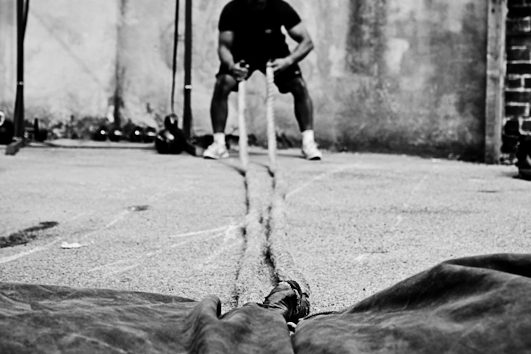High Intensity Interval Training – HIIT
High Intensity Interval Training – HIIT – is an exercise strategy to improve fitness and burn body fat through high intensity interval training exercises, including jump rope, boxing, sprinting, kettlebells, body weight and other modalities where the exerciser performs a rapid bout of exercise followed by a short rest period.
How do I perform High Intensity Interval Training – HIIT?
HIIT is best performed in bouts of 8 to 10 repetitions, with each rep lasting 30 – 60 seconds, followed by a rest period of 30 – 60 seconds, or a rest period of 2:1. This means that if the exercise bout lasts 60 seconds the rest period should last 30 seconds before the next intense bout of exercise is repeated.
The traditional view of the best way to body fat burning via exercise is to perform steady state exercise over prolonged periods of time, usually lasting between 30 and 60 minutes.
High Intensity Interval Training – HIIT – is somewhat counterintuitive to this view . Nevertheless, HIIT has shown to promote more fat burning, perhaps due to an increase in the Resting Metabolic Rate (RMR) – the body’s ability to burn calories – for prolonged periods after exercise.
HIIT and burning body fat
HIIT has been shown to improve body fat burning up to 3 times more than traditional steady state of cardio (still very popular in the techno gyms) exercise and it will allow the exerciser to burn up to 9 times more calories at rest for the following 24 – 48 hours after exercise.
The benefits of High Intensity Interval Training – HIIT
The benefits of HIIT are well publicized and include:
• Improvements in stamina
• An increase of VO2 max
• An increase of Resting Metabolic Rate (RMR) for 24 – 48 hours post exercise hours due to excess post-exercise oxygen consumption
• A decrease in body fat
HIIT specifics and performance
High Intensity Interval Training – HIIT – should be performed after a 5 minute steady state warm up. the exerciser should then perform a bout of high intensity exercise for 15 to 20 seconds, followed by 1 to 2 minutes rest (or low level exercise). After this ‘active rest’ the performer should then repeat the first bout of exercise, then rest again up to 6 – 10 times.
Another method of HIIT is to perform exercise at 80% of Age Predicted Maximal Heart Rate (APMHR is 220 – age) for 45 seconds to 90 seconds followed by 1 to 2 minutes active rest (again the active rest should be low intensity exercise).
HIIT and your workout
HIIT is, by definition, includes highly intense exercise sessions. As such exercisers looking to perform HIIT should only perform this type of exercise 2 – 3 times a week.
A good example would be to include HIIT sessions on days when you don’t perform weight training exercises.
To Conclude
Give up your 20 minutes of cardio session either before or after your weight session. Train movements rather than muscles and all in an explosive manner. If you choose to use the Techno-Gyms then get in and out of there as soon as possible. HIIT is a fast and effective way to get your mind and body working as one. It is a Zen like state of meditation in movement. You always have to present at that moment, no room for a distracted mind.

High Intensity Interval Training

 RAWFIT est. 1999
RAWFIT est. 1999 
